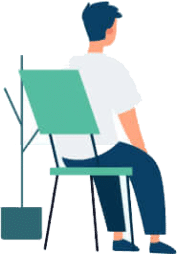Safe Pain Medication Management, Tips For Talking To Your Doctor

Prescription Painkiller Talking Points with Your Doctor
Prescription opioids are among the most often dispensed pharmaceuticals in the United Kingdom, yet patients are frequently unaware of their safety and effectiveness. A discussion with your doctor can help you avoid potential dangers and identify the best pain-management options.
Opioid medicines were once (before the 1990s) only used to relieve the acute pain caused by surgery, significant injuries, or terminal disease. However, over the last two decades, the potent pills have become the go-to pain reliever for anything from minor dental procedures to backaches and chronic headaches. In 2015, doctors prescribed enough prescription painkillers to treat every American for 21 days straight.
Prescription painkiller use has increased dramatically, as has opioid abuse and addiction. Overprescribing has also been linked to the ongoing opioid epidemic, which has claimed the lives of more than a quarter-million individuals since 1999.
Oxycodone (Percocet), hydrocodone (Vicodin), morphine, and codeine are examples of prescription opioids. The powerful drugs act by preventing pain signals from reaching the brain. However, the medicines have euphoric and soothing effects, making them highly addictive.
Doctors don’t always warn patients about the dangers of prescription painkillers. They may even prescribe them when over-the-counter or natural therapies would solve, if not improve, the situation.
The Right Questions to Ask Your Doctor
Fortunately, you may take action to reduce the risks linked with opioids.
Before you fill your prescription, tell your doctor that you’d want to talk more about your diagnosis and treatment options.
Write down and ask the following questions to get the most out of your chat:
- Why do I require opioids?
- Are there any better or safer options?
- What are the advantages and disadvantages of using this medication?
- What are the possible adverse effects of the medication?
- What impact will this have on the other medications I’m taking?
- How long should I use this medication?
- Is naloxone available without a prescription?
It may be difficult or uncomfortable to begin this dialogue. Doctors are extremely busy, and patients frequently feel rushed. Many people are concerned that questioning a doctor may challenge the doctor’s authority or knowledge. This, combined with the inherent nervousness we all have when confronted with health issues, causes people to remain silent.
When it comes to pain management, you must be your own advocate, as with all aspects of your health. You have the right to request the information you need to make educated decisions, and you should feel confident in your ability to say “no” to any aspect of your treatment that doesn’t feel right. Don’t just take your doctor’s word for it that they understand what’s best for you.
A good doctor will listen to your worries and encourage you to ask questions. After all, patient education is an essential component of their job. You’re also an important member of your healthcare team.
TIP: Always remember that you have the right to inquire. Make sure you understand everything your doctor says, and if you don’t, ask more questions. If you’re having problems recalling things, bring a friend or family member to your appointment and ask them to take notes for you.
What is the purpose of this medication?
People frequently go to the doctor complaining of discomfort, but their doctor never finds the source of the ailment. This is especially true for people with chronic pain, which is a typical symptom of a wide range of illnesses that can be difficult to diagnose. The most crucial thing you should ask your doctor, according to medical experts, is this: What’s the prognosis for me?
It is a common situation for a patient with continuous, inexplicable back pain to want to be immediately administered opiates. The quick remedy is rarely effective. The patient returns to the doctor, who increases their painkiller dosage but never discovers the source of the pain.
Identifying the exact source of persistent pain can take a long time, a lot of tests, and a lot of patience, but it can also save your life. For example, a patient with persistent back pain who was addicted to opiates could be suffering from a more severe condition. Following a rectal examination, the doctor could find that the patient had cancer.
Of course, not everyone with inexplicable pain has a serious underlying problem like cancer, but getting a correct diagnosis should always come first, followed by treatment to fix whatever is wrong.
Only then, when you know what’s wrong and the patient is in agony, can and should we start talking about pain treatment.
TIP: If your doctor isn’t sure what’s causing your pain, let them know you want a second opinion. They could even be able to refer you to a professional who can help you get the answers you’re looking for. The request will not outrage any doctor worth his salt.
Overdose, Addiction, and Side Effects of Opioids
Opioids are potent nervous system depressants that can cause respiratory problems and even death. While less powerful opioids and lower doses are associated with fewer problems, no opioid amount is entirely risk-free. Opioids are also highly addictive, and a person can acquire a physical dependence on them within days or weeks of first using them. The longer you take opioids, the more likely you are to develop an addiction. Unfortunately, clinicians frequently overlook these dangers.
The Times Union reported in April on the findings of a 2018 study conducted by the Siena Research Institute, which revealed that just half of New Yorkers who were prescribed an opioid in the previous two years were informed by their doctor about the medication’s risks.
If your doctor prescribes an opioid, inquire about the following significant risks connected with opioid use:
- Risks of overdose
- Dependence
- Addiction
Make sure you know the signs and symptoms of an overdose and ask your doctor if you need a naloxone prescription as a precaution. An accidental opioid overdose can be reversed with this life-saving medication. If you have a history of addiction or have used opioids recreationally in the past, having the antidote on hand is critical.
Other typical opioid side effects include nausea, vomiting, itching, constipation, dry mouth, tiredness, confusion, mental fogginess, melancholy, and enhanced pain sensitivity. If you experience any of these adverse effects, talk to your doctor about how to deal with them.
Before filling a prescription, talk to your doctor or pharmacist about how opioids will mix with other medications you’re taking and what to avoid. It’s extremely risky to combine opioids with alcohol, sedatives, muscle relaxants, or sleeping drugs, which can lead to an overdose.
TIP: It’s critical to avoid consuming opioids if you’re pregnant or may become pregnant. Opioids raise the risk of birth abnormalities and the likelihood of your baby being delivered prematurely or underweight. Infants exposed to opioids before birth may develop neonatal abstinence syndrome, which is a painful illness.
Be Open and Honest About Your Medical Background
It’s critical to have an open and honest conversation regarding your medical history. Let your doctor know if you’ve ever struggled with substance abuse. Your doctor may still prescribe you opioids, depending on your circumstances. After all, there are times when nothing but an opioid will provide adequate pain relief, such as after a car accident or surgery. However, if your doctor is aware of your medical history, they can include necessary precautions in your treatment plan. You may be asked to sign a treatment agreement by your doctor—these voluntary agreements, often known as “opioid treatment contracts,” lay out explicit expectations of behaviour.
Typical contracts frequently demand random drug testing, attendance at follow-up consultations, and refraining from asking for extra or early prescriptions. Patients also agree not to sell or share their medications or go to more than one drugstore to fill their prescriptions. If you break any of the rules in the agreement, your prescription may be cancelled.
Your doctor should test you for any risk factors for addiction, regardless of your medical background.
The following factors may enhance your chances of acquiring an opioid addiction:
- A personal history of substance abuse or alcoholism
- A history of drug or alcohol abuse in the family
- A history of sexual assault or other trauma as a child
- Mental health problems, such as depression, anxiety, attention deficit or hyperactivity disorder, obsessive-compulsive disorder, bipolar disorder, and schizophrenia
- Life experiences that cause stress
- Smoking tobacco
You may take critical steps to reduce your risk of relapse if you’re in recovery and need to take opioids after surgery or for another reason.
Enlist the support of a spouse, parent, or trusted friend, to keep track of your prescription and dosing, as well as to keep an eye on you.
When something isn’t quite right, family members are frequently the first to notice. It’s also an excellent opportunity to ask for the help of your friends and family. Attend meetings or check in with your sponsor if you’re a member of a 12-step programme.
Maintain regular contact with your doctor during your treatment. Tell them how the opioids are working for you and if you’re having any cravings or other indicators of addiction. If you’re having trouble, seek help from an addiction professional.
TIP: Call us on 0800 999 1083 if you think you’re on the verge of becoming addicted. The free and confidential hotline can provide addiction information and treatment referrals for opioid addiction.
Pain Serves a Purpose
According to medical experts, people must also have realistic expectations about pain and comprehend its purpose. Pain exists for a reason. When we get harmed, it’s usually to remind us not to do anything dumb. Pain keeps us safe from further harm.
Some people might suffer from a variety of pain. Nociceptive pain acts as a warning system to protect your body from damage when you accidentally touch a hot burner on a stove. Nociceptive discomfort is usually temporary.
Inflammatory discomfort often lasts longer. It occurs when the immune system responds to damage after an injury or infection, and it serves a dual role. The body’s mending process begins when immune cells penetrate injured tissue. However, the resulting tenderness and hypersensitivity are protective because it prevents you from engaging in physical activities that could aggravate the injury.
Opioids, unfortunately, can mask this protective function. A worker who tears a muscle on the job may be able to return to work after being “pumped full of Vicodin,” but the chances are they’ll engage in more activity, which will only make them worse.
For decades, doctors have been more aggressive in treating pain, a mindset supported by opiate producers and well-intentioned doctors who believed they could better relieve their patients’ suffering. Unfortunately, this has resulted in a misunderstanding of the nature of pain and the overuse of opioids. Patients must understand that pain alone will not cause organ damage.
While a blood thinner like Coumadin can save a patient’s life in the event of a blood clot, and antibiotics are necessary for treating dangerous infections like bacterial meningitis, a painkiller is a life-improving comfort measure.
No one needs to take an opioid if they don’t want to. These are for pain relief, and the body will naturally lower pain as the healing process from an accident progresses.
TIP: Discuss your treatment goals with your doctor before starting opioids for chronic pain. Within one to four weeks, your doctor should reevaluate you. Together, you should create realistic and quantifiable goals for pain and function.
Opioid Substitutes to Consider
While opioids are very efficient in decreasing acute pain, they are not recommended as a first-line or routine treatment for chronic pain. That’s because narcotics like oxycodone and hydrocodone lose their potency over time when the patient develops a tolerance. Long-term use of opioids can have the opposite effect, making people more sensitive to pain. Opioid-induced hyperalgesia is the term for this phenomenon. The use of opioids over an extended period also raises the risk of addiction and overdose. Individuals who use opioids for chronic pain should have a 30% reduction in discomfort. If they don’t, opioids aren’t the solution, and they should consider other options. There are a variety of over-the-counter and nonprescription drugs available to manage chronic pain.
Non-opioid Painkillers
Non-opioid medicines, including ibuprofen, acetaminophen, aspirin, and naproxen, work just as well as, if not better than, opioids in many circumstances, even for acute pain.
According to a 2017 study published in the Journal of the American Medical Association (JAMA), emergency room patients with fractured bones and sprains who were given a combination of ibuprofen and acetaminophen reported the same amount of pain relief as patients who received opioids such as Percocet or a mixture of Tylenol and codeine.
Other research has found that over-the-counter medications can reduce dental pain, pain from kidney stones, and pain from chronic illnesses like arthritis and back pain equally as well as opiates.
Opioids were no better than over-the-counter pain in relieving pain in individuals with chronic hip, knee, and lower-back pain. Individuals on opioids suffered slightly higher pain over the course of a year than those on non-narcotic medication.
Anti-inflammatories, such as ibuprofen and naproxen, can relieve the inflammation linked with pain, unlike opioids, which suppress pain perceptions. If over-the-counter drugs are ineffective, prescription pharmaceuticals may be used to alleviate pain.
Non-opioid prescription drugs that are commonly used to manage pain include:
- Topical anaesthetics, such as lidocaine or meloxicam or capsaicin
- Nonsteroidal anti-inflammatory medications (NSAIDs) such as Toradol, Mobic, and Indocin
- Anti-seizure drugs, such as gabapentin (Neurontin), relieve nerve pain
- Injections of corticosteroids
- Antidepressants of various sorts
However, each medicine has its own set of risks and adverse effects. Consult your doctor to see whether any non-opioid prescription drugs or non-drug therapy are appropriate for you.
Non-drug Pain Management
Non-pharmacological therapies and techniques can also help with pain relief and are often more effective than drugs, especially in the case of chronic pain.
Breathing exercises and medicine, for example, have proven to be effective pain relievers. Acupuncture, therapeutic massage, the use of heat and ice, physical therapy, and exercise are all helpful pain treatments.
Adopting behavioural methods that help patients return to a more normal state of functioning is optimal to achieve long-term pain control. Weight loss, exercise, mindfulness, and enhanced social relationships are more beneficial than any treatments where the patient comes to the healthcare industry and says, ‘Fix me,’ at least in managing chronic pain.
Other options for pain management that don’t include taking medication are:
- Biofeedback
- Music therapy
- Relaxation strategies (such as meditation and mindfulness)
- Acupuncture, yoga, and tai chi
- Hypnosis
- Transcutaneous electrical nerve stimulation (TENS)
- Thermotherapy with cold lasers
- Ultrasound therapy
- Sprints, braces, walkers, and orthotics
- Cognitive behavioural therapy (CBT)
Opioids should be taken for the shortest duration possible and at the lowest effective dose when used for acute pain. Three days of opioids will probably be sufficient. A patient will rarely need more than seven days’ worth of pain medication.
TIP: While the medical community embraces an integrative approach to health care that incorporates traditional, complementary, and alternative techniques, they might not be available through the NHS. Talk to your doctor about your options for managing pain and consider all the alternatives.
Understand Your Roles and Responsibilities
Finally, remember that if you are prescribed an opioid, you are responsible for protecting yourself and others.
Learn about the medication you’re taking and follow instructions. Never exceed the dosage prescribed for you. If you haven’t taken your medicines in a few days, don’t start taking them right away. It’s possible that your tolerance has decreased and the dose is too strong.
Medications should also be kept out of reach of children and teenagers, preferably behind locked doors. Also, make sure to use the safety lock on your pill bottles every time you open them.
Opioids can impair your ability to drive or operate large machinery or equipment. If you’re taking opioids, talk to your doctor about what activities you should avoid.
If you’re on a prescription opioid, keep these things in mind:
- Take your medicine exactly as directed.
- Never give or sell your drugs to anybody else.
- Opioids should never be used with other drugs or alcohol.
- Safely dispose of any unused opioids.
- If your prescription is lost or stolen, call the police.
If you notice that you are developing a physical dependence on your painkiller, tell your doctor as soon as possible.
Increased pain is frequently the first symptom of physical dependence on an opioid. The patient may misinterpret the pain as a flare-up of their condition, leading them to believe they require a higher dose of medicines.
Patients might not be told they are becoming dependent until they feel nausea and other flu-like symptoms. The process, however, starts a lot sooner than that. Dependency can develop in as little as two months.
Compare Rehab UK’s mission is to improve the quality of life for people struggling with substance use by providing fact-based information about behavioural health conditions, treatment alternatives, and outcomes.
We do not intend for the information we give to be used in place of professional medical advice, diagnosis, or treatment. It should not be used as a substitute for medical advice from a doctor or other qualified healthcare provider.





